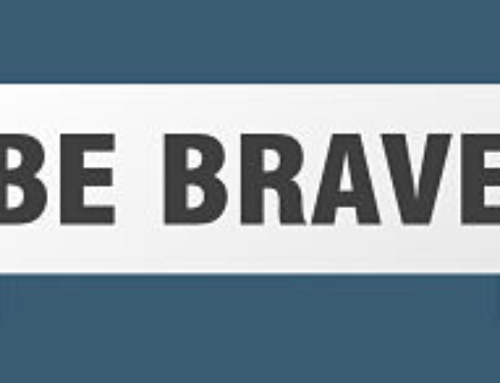Raise your hand if you’ve used one of these excuses for why you haven’t gotten around to putting a strategy in place for business development: “We grow based on referrals.” “We’re going to hire somebody.” “We’re too busy with our current clients.”
You wouldn’t be alone — many agencies make the same gigantic mistake of putting off planning for the future. They run from fire to fire, putting one out just as another is starting. It’s all too easy to delay the agency’s vision for moving forward until another less hectic day.
Those excuses might seem justifiable in the moment, but if your agency is going to thrive — not merely survive — you’ve got to prioritize getting a plan in place. It’s a difficult task, but the ROI is huge.
Don’t Wait for Disaster. An unavoidable reality of agency life is that it ebbs and flows. New clients sign on, old ones move on, and business continues as usual. But when you have a plan in place to consistently uncover new business opportunities, the ebbs won’t hit as hard.
Too many agencies only consider a new business plan when their big, gorilla clients are unhappy or threaten to leave. By that point, it may be too late. It just takes one call from that valuable client to send an agency into a tailspin. You’re left scrambling to find a major replacement for the lost revenue.
This is an especially dangerous tactic in the modern business world. It’s getting tougher to find great client prospects and get them signed quickly. The time period from the initial meeting to the moment the client signs the dotted line has stretched out considerably. That process cannot begin after a big client walks out. It should already be in motion.
The bottom line: You should think of acquiring a new business like exercise — it’s a muscle that needs to be used every day. Otherwise, it atrophies.
Invest in Your Agency’s Future. When it comes to pursuing new business, agency leaders could learn a valuable lesson from the world of investing. Because no one can reliably time the market, successful investors often use dollar-cost averaging to grow consistently rather than jump in and out of investments on a whim.
Similarly, there’s no way to predict when potential clients will emerge on the market. They could get ticked off at their current agency and unexpectedly terminate their relationship. Or there might be a seismic shift inside a company, and suddenly it’s looking for a new agency to work with. There’s no way to guess when these things will happen, so agencies need to be constantly investing time and effort into finding potential clients and nurturing relationships.
Just Keep Swimming. No matter how busy an agency is, the primary responsibility of its owner should be hunting for new business. Use a content marketing tactic, for instance, and consistently share valuable information that helps prospects improve at their jobs. Don’t limit your activities to pitching or calling on prospects. You should also be writing content and connecting in other ways. It takes a lot of effort, but neglecting the pursuit of new business is a huge money-sucking mistake that hurts too many agencies.
Here are some additional business development strategies for making sure the pursuit of new business stays top of mind:
Don’t stop growing. I don’t care how big you are or how healthy your bottom line is. As an agency leader, you must take on the identity of a shark: You stop swimming, and you die. Why? Agency work is continuing to grow, and there’s no end in sight: In 2014, agency revenue rose to a record $46.3 billion; 40 percent of that growth was driven by digital work.
Embrace change. You have to think ahead of the current trends, because your great idea today may kill your business tomorrow. The reality is that whatever solutions you’re offering clients and whatever model your business runs on, there’s going to be different options a year from now and certainly two years from now. As an agency leader, your ability to forecast is your most valuable tool.
There is a new generation entering and taking up space in the consumer market, and they have different ways of viewing marketing and advertising. Recent studies show that 84 percent of Millennials distrust traditional advertising. Are you prepared for this number to take over the entire consumer population? You need to be ready for this change and the ones coming after.
Fully inhabit your role as leader. You, you’re the boss, you sign the checks, your name is on the masthead, but are you really a leader? The health of your business today, tomorrow, and 10 years from now rests squarely on your shoulders. Keep that responsibility at the forefront of every task you take on and every order you give. You have to listen to your employees.
Work harder, smarter, tougher. The dirty truth: Right now, someone else has your business. Your customers of tomorrow are someone else’s customers today. Business is a competition — if you want to win, you have to work harder, smarter, and tougher than anyone else. Of course, this doesn’t mean you should steal another company’s business. But when potential customers look up above the smoke of a burning relationship, your business should be there, ready to jump in.
Consider these numbers: 96 percent of small to midsize businesses incorporate social media in their marketing strategy. Among small businesses, a quarter rely on online marketing, with 17 percent using SEO and more than one-fourth using email marketing. You have to be ready in every area to pounce on any new business that becomes available to you.
Agency owners carry tremendous responsibility — it’s all too easy for them to micromanage and become ingrained in the day-to-day work of keeping current clients happy. However, agencies that focus only on the short term are taking a sizable gamble. Big clients can walk out the door at any time. But if you’re armed with a strategy for acquiring new business and incorporate the task into your daily routine, there should always be new prospects in the pipeline.






